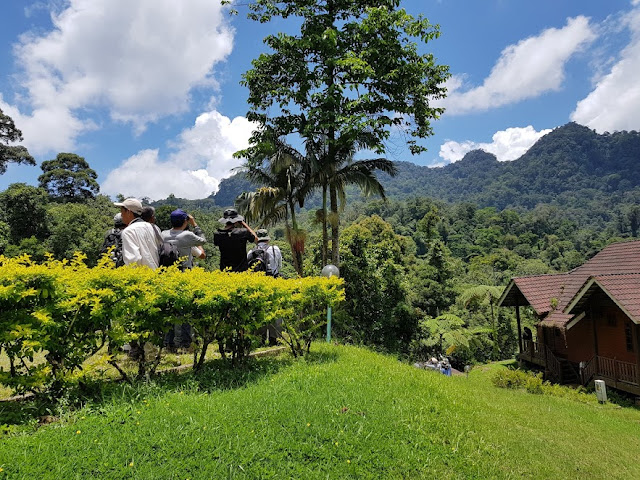 |
| Golden Bush Robin |
Compiled
by Lim Seik Ni
1. Kalij Pheasant (Lophura leucomelanos )
3. Grey-capped Woodpecker (Picus canus)
4. Bay Woodpecker (Blythipicus
pyrrhotis)
5. Great
Barbet (Megalaima virens)
6. Blue-throated Barbet (Megalaima asiatica)
7. White-throated
Kingfisher (Halcyon smyrnensis)
10.Red-rumped Swollow (Cecropis daurica)
14.Eygptian Vulture
(Neophron percnopterus)
19. Besra (Accipiter virgatus)
26.Himalayan Buzzard (Buteo spp)
27.Common Kestrel
(Falco tinnunculus)
28.Peregrine Falcon (Falco peregrinus)
29. Amur Falcon (Falco
amurensis)
30.Eurasian Hobby (Falco
subbuteo)
32.Yellow-billed Blue
Magpie (Urocissa flavirostris)
33.Red-billed Blue Magpie (Urocissa
erythroryncha)
34.Common Green
Magpie (Cissa chinensis)
36.Black Headed Jay (Garrulus lanceolatus)
40.Long-tailed Minivet (Pericrocotus ethologus)
41.White-throated fantail (Rhipidura
albicollis)
43.Black Drongo (Dicrurus macrocercus)
44.Maroon Oriole (Oriolus
traillii)
45.Long-tailed shrike (Lanius
schach)
47.Black Headed Jay (Garrulus lanceolatus)
49.Golden Bush Robin (Tarsiger chrysaeus)
51.White-capped Water-redstart (Chaimarrornis
leucocephalus)
52.Plumbeous Water- redstart (Rhyacornis fuliginosus)
56.Black-throated Tit (Aegithalos concinnus)
57.Yellow-browed Tit (Sylviparus modestus)
58.Red-whiskered Bulbul (Pycnonotus jocosus)
59.Himalayan Bulbul (Pycnonotus leucogenys)
61.Asian Black Bulbul (Hypsipetes leucocephalus)
62.Hume’s Warbler
(Phylloscopus humei)
63.Ashy-throated Wabler
(Phylloscopus maculipennis)
64.Grey-hooded Warbler (Seicercus xanthoschistos)
65.Common Chiffchaff (Phylloscopus
collybita)
66.Yellow-bellied Wabler (Abroscopus superciliaris)
67.Rusty-cheeked Scimitar Babbler (Pomatorhinus erythrogenys)
68.Streaked Scimitar Babbler (Pomatorhinus ruficollis)
75.Bar-throated Siva (Siva Strigula)
77.Orienal white-eye (Zosterops
palpebrosus)
79.Grey Bushchat (Saxicola
ferreus)
80.Pied Bushchat (Saxicola
caprata)
81.Common Stonechat (Saxicola
torquatus)
82.Rusty-tailed flycatcher (Muscicapa ruficauda)
83.Ferruginous flycatcher (Muscicapa ferruginea)
84.Rufous-gorgeted Flycatcher (Ficedula strophiata)
85.Large Niltava (Niltava
grandis)
90.Mrs Gould’s Sunbird (Aethopyga
gouldiae)
92.Russet Sparrow (Passer rutilans)
93. EurasianTree Sparow (Passer montanus)
94.Olive-backed
Pipit (Anthus hodgsoni)
95.Rosy Pipit
(Anthus roseatus)
96.Dark-breasted
Rosefinch (Carpodacus nipalensis)
 |
| Asian Black Bulbul |
 |
| Rusty-cheeked Scimitar Babbler |
 |
| Eurasian Hobby |
 |
| Common Raven |
 |
| Long-tailed Minivet |
 |
| Black-throated Tit |
 |
| Rufous Sibia |
 |
| Mrs Gould's Sunbird |
 |
| Russet Sparrow |
 |
Pink-browed Rosefinch  Yellow-throated Marten (L) and Barking Deer (R) |
Photo Credit: Adolph Khor for (Barking deer, Black-throated Tit and Golden Bush Robin)




















































